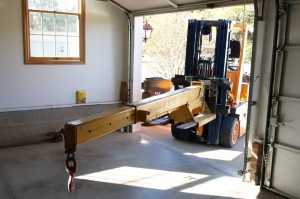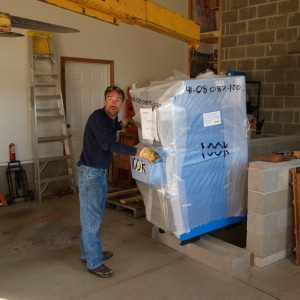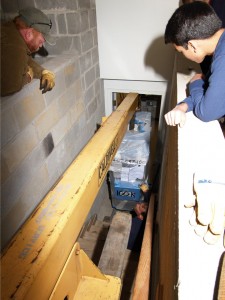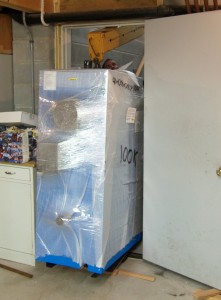Well, it’s that time of the year again. The weather is cooling off and we’ll have to begin the heating season once again. The performance of the wood boiler has been very good, although with last winter being colder than normal we ended up using about 6 cords of wood between October 2008 and June 2009. Operationally we’ve made very few tweaks to the control system software, and the variable speed circulator that controls the storage tank loop has proven to be magic. PID tuning of its control loop was pretty easy, and if I wasn’t doing more monitoring and research, the control system could be greatly simplified, reducing it to something any HVAC technician or homeowner could maintain. Using just thermostats and a couple relays, and one of those little PID controller 1/4 DIN modules from Automation Direct would be enough. There have been no issues with reliability, everything has worked as designed. Also, when I took a water sample from the boiler drain at the end of the heating season, it came out crystal clear, thanks to maintaining a system fluid pH of about 8.5.
I can’t emphasize enough the importance of maintaining the proper pH level of the water in the system, since this is responsible for ensuring long system life and minimizing any corrosion problems. Many hydronic systems are severely neglected regarding this. A friend of mine who installs geothermal systems reports that since he started raising the pH of the water in the ground loops and heating loops of the systems he installs this has virtually eliminated problems with rust and corrosion.
-Jeff



